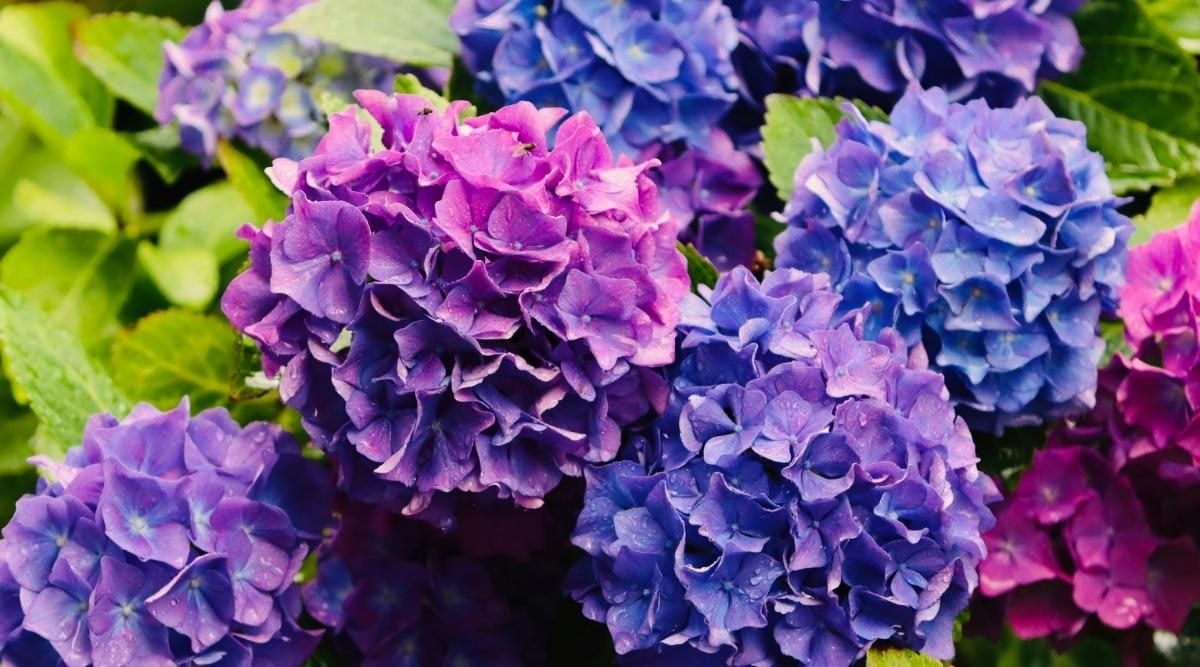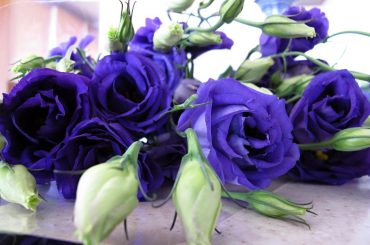Table of Contents
The colour purple represents opulence and grandeur. Purple is a highly invigorating colour as it is a blend of two strong, bright and energising colours, red and blue. This makes purple an extremely stimulating colour that can draw anyone’s attention away. Due to its strong electromagnetic wavelength, colour is often used in visual illusions and various other types of optical tricks.
When it comes to selecting a colour scheme for your garden, always grow plants that complement each other in size, shape and colour. Therefore, if you want to have a garden that is bright yet well-balanced, select one particular type of purple flower and turn that into a focal point. You can even attract more attention by growing light-coloured flowers around it.
When it comes to nature, the colour purple is available in abundance. Here is a list of 25 purple flowers that can brighten up your green space and make it look posh and plush.
1. Lavender
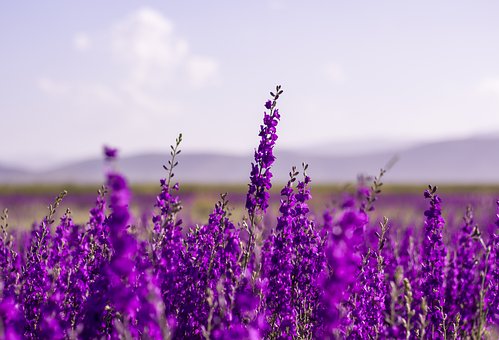
Also called Lavandula, the lavender flower belongs to the mint family and is native to the countries bordering the Mediterranean. The fragrant leaves have a floral scent with a herbal undertone. Lavender flowers can also be dehydrated and used in the making of fragrant sachets and for manufacturing essential oils. The three most commonly cultivated varieties of Lavender are English Lavender, French Lavender and woolly lavender. However, growing these plants will not be considered as the smartest decision if you have pets at home, as cats have an aversion to the strong scent of lavender which can prove to be toxic for them.
2. Lilac
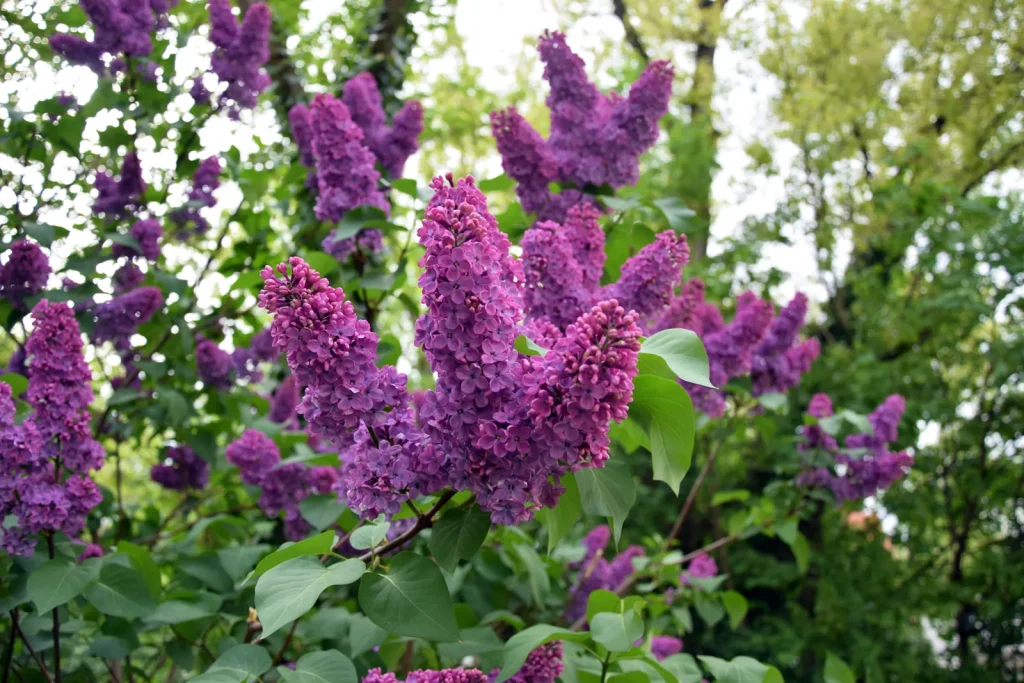
The lilac flowers belong to the olive family and grow on shrubs and small trees. These flowers bloom in spring and are native to Europe and some parts of Asia. The plant has dark green leaves, and the small comprises four petals arranged in large oval clusters. The plant needs well-drained, moist soil and flourishes the most in full sun and partial shade. This purple flower has religious significance in certain countries like Greece, Macedonia, and Lebanon and also symbolises strength of character.
3. Wisteria
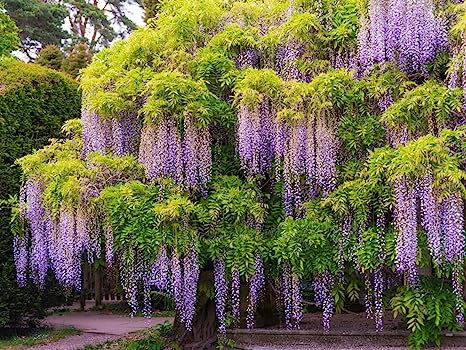
The wisteria plant blossoms in the spring season. If you want to grow a beautiful plant in your yard, plant the seeds in spring or fall while the plant is dormant. The plant needs full sun exposure and rich as well as well-drained soil away from other plants because it can easily overtake other plants in your garden. If you want to grow wisteria as a vine, make sure that your support structure is strong. Since wisteria is a strong and sturdy plant, at certain times, the support structure is not able to take the weight, and it falls as a consequence.
4. Crocus
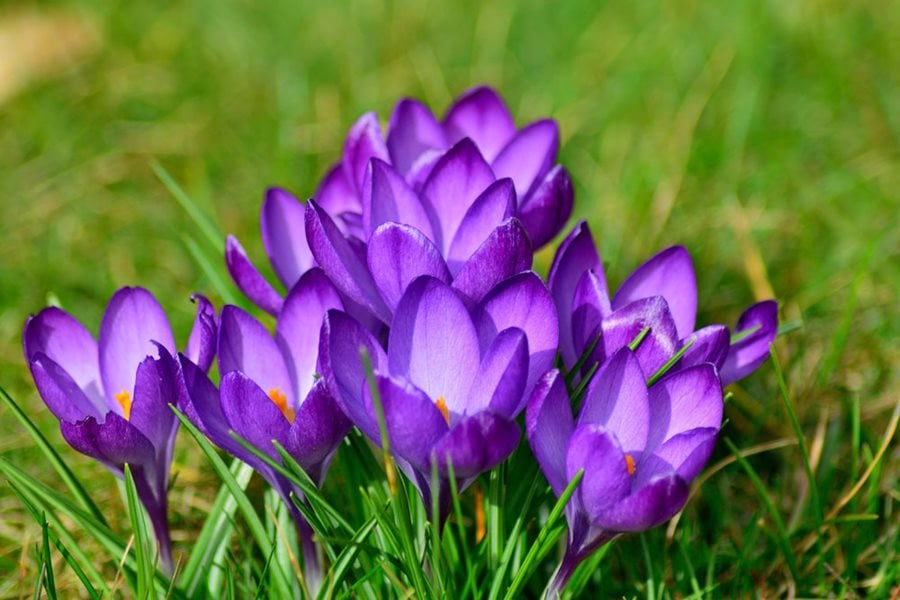
Since the flowers contain gorgeous golden pollen inside, it is a big draw for pollinators like bees. The warmth of the rocks will cause plants to bloom earlier than expected when planted in damp soil and rock gardens. The plant needs plenty of sunlight for proper growth and does not mind competing with other plants for nutrients from the soil. This plant grows best in sandy soil as well as clay soil. Since they are short-heighted plants, you can grow a row of crocuses in front of a flower bed to hide the stalks of comparatively bigger plants so that your flower bed does not look shabby. Crocuses will also look beautiful if grown along paths and even walkways.
5. Verbena
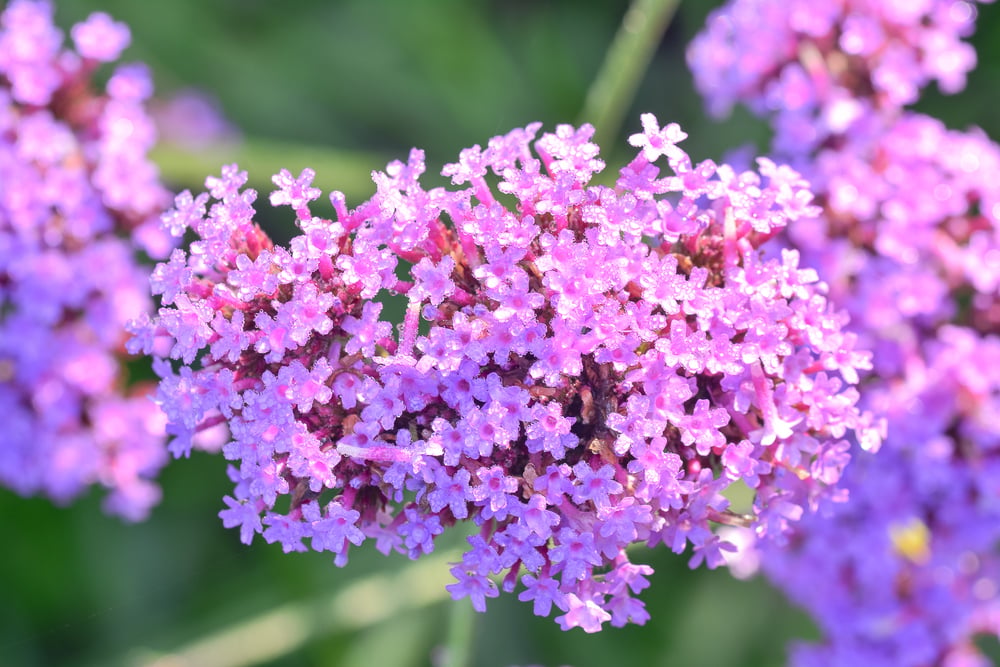
The verbena flower, also referred to as the Vervain or Verveine in some countries, is a plant that can withstand severe heat and humidity. The extremely versatile and sturdy plant is indigenous to America and Europe. It can be grown in pots, hanging baskets, can be planted as groundcovers and even trail over walls. Water them consistently every week so that they do not dry out, and you will have the most beautiful verbenas in the community.
6. Petunia
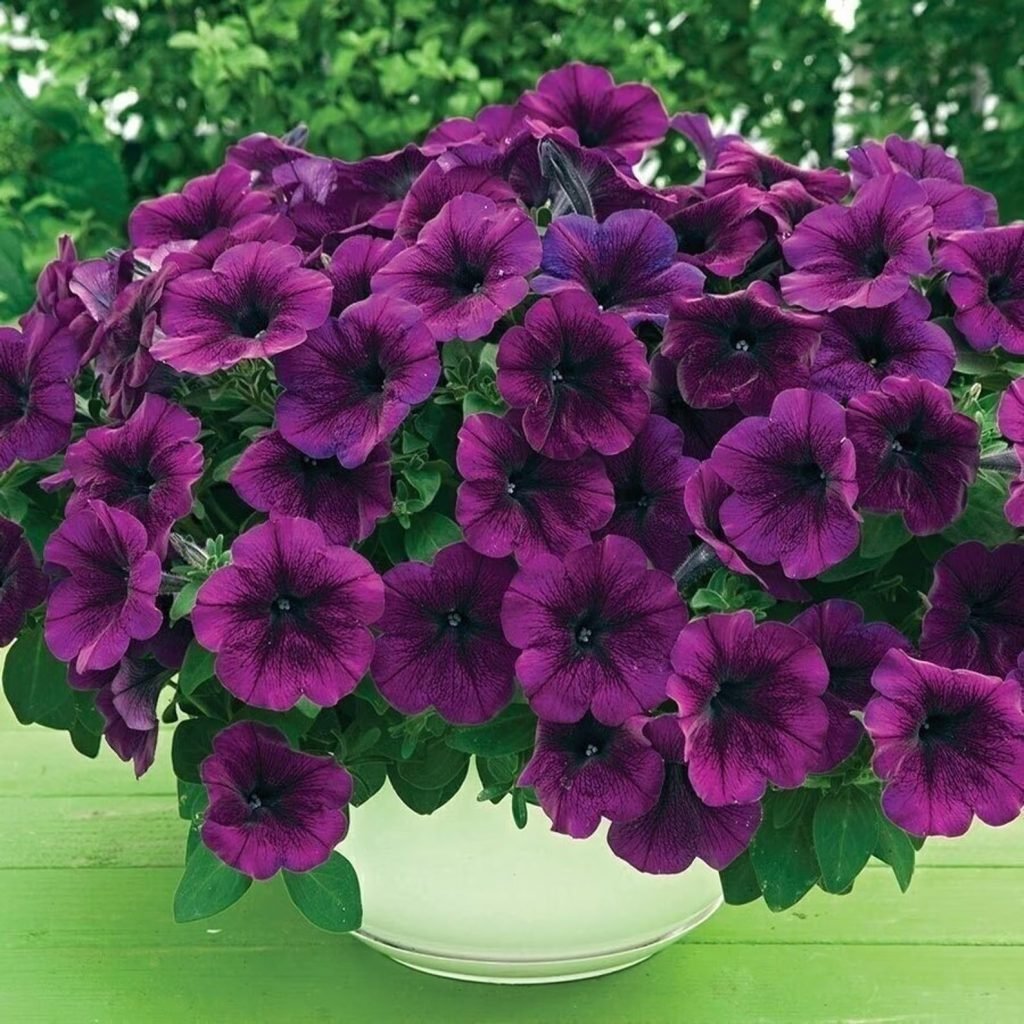
Petunias are one of the most popular annual flowers and are planted in almost every garden because of their beautiful bloom. They are available in various sizes and colours, thus, helping you make your cottage garden look refreshing and cute. Sow the seeds in slightly acidic clay soil prepared with some organic matter. Make sure that you start the process once the frost has cleared and the temperature has increased a little.
7. Aster

A perennial flowering plant, Asters likes to bask in the bright rays of the sun and grows best in loamy soil that is extremely well-drained. An interesting fact about aster is that in winter, the plant provides food for various birds as well as animals as the seeds are edible and habitat in the dried stalks. In the summer, asters attract pollinators like bees. It is considered a lucky charm for those who are born in September.
8. Columbine
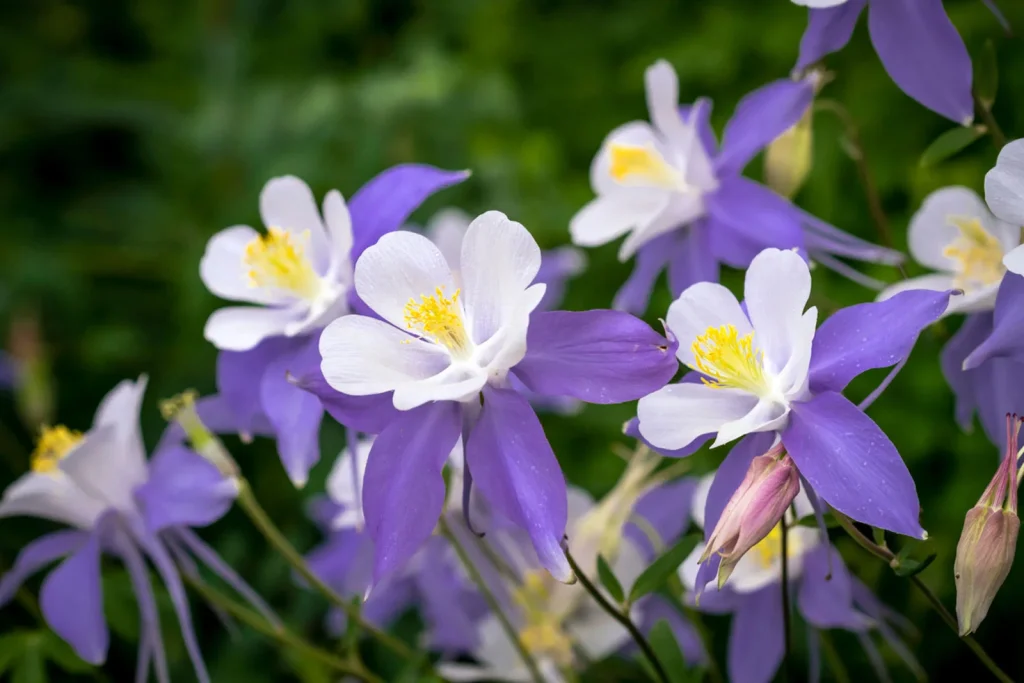
Also commonly called Granny’s bonnet and European Crowfoot, these delicate flowers are a symbol of fortitude. This exquisite purpleflower is gifted to those people who are going through tough times and who need courage and strength. A healthy Cloumbine plant can gain a height of 2-3 feet if provided with dappled shade. This will allow the foliage to remain cool when the sun is the brightest during the day and ensure that the foliage doesn’t dry out because of its heat.The plant thrives in heavy clay soils that can retain moisture, and the best way to plant them is with gathered seeds from existing plants.
9. Pansy
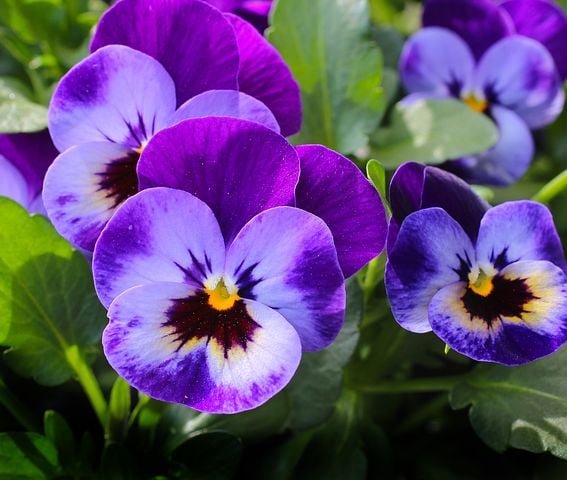
The French word “pansy”, meaning “thought”, is the origin of the term pansy. The flower has large heart-shaped overlapping petals that love cool weather and bloom the best from spring through fall. If you want to grow pansies in your cottage garden, plant them alongside other cool-season flowers, such as lobelia, primroses, and sweet alyssum, to create a riot of colours. Pansies can also withstand frost and bloom equally well in winter when the entire landscape looks dull and drab.
Another added advantage of growing pansies in your garden is that they are edible. So feel free to garnish your salads and cakes with these beautiful flowers.
10. Allium
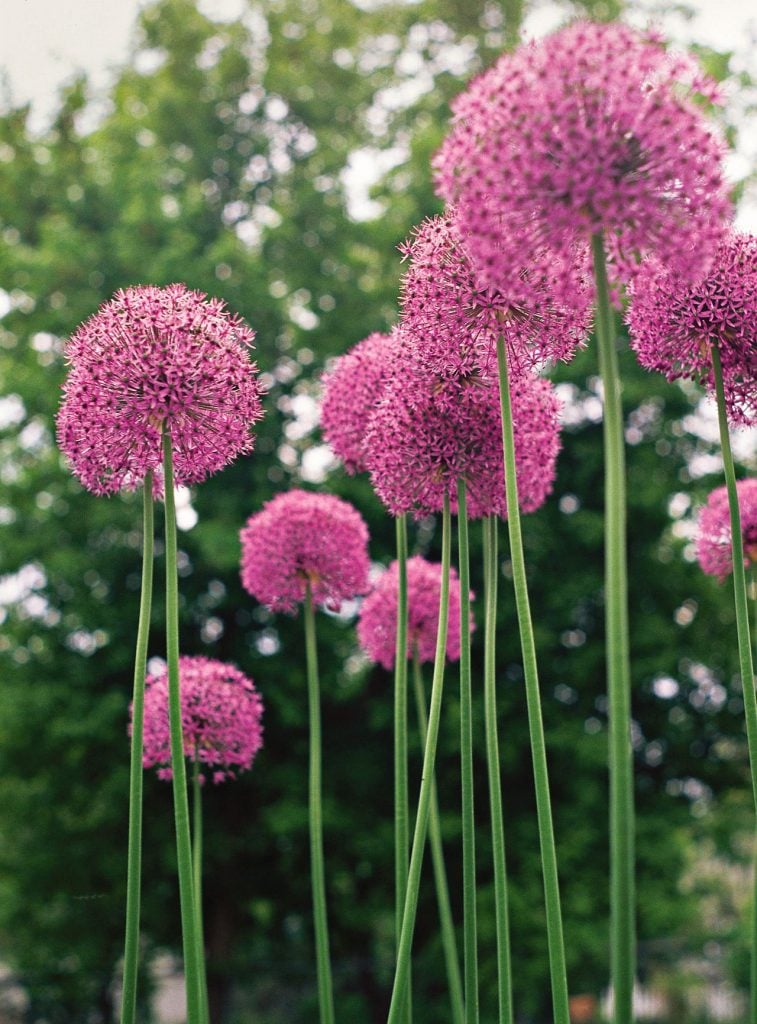
An allium flower can be recognised by the globe-shaped cluster of flowers on the top of the stock. The plant has quite a few fancy and amusing names like ‘Gladiator’, ‘Goliath’, and even ‘Globemaster’. Since they are very closely related to onions and garlic, the allium flower can successfully deter deer. The soil should not be extremely wet while sowing the bulb to avoid rotting, but it must be watered uniformly. The plants can gain a substantial height; these plants can be used as a focal point in the garden that attracts everyone’s attention.
11. Morning Glory
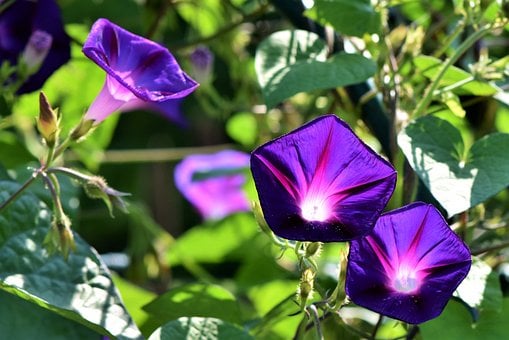
A medicinal purple flower that was once used as a laxative by the Chinese, the morning glory is a trumpet-shaped flower that can add a charming touch to your flower bed. If grown under the right conditions, the vine can reach a height of 10 feet. To turn it into a bush, you can grow the plant in a pot and prune it regularly, or it can also serve the purpose of a ground cover. If you specifically wish to buy purple-hued morning glories, go for Kniola’s Black or even Star of Yelta. These flowers can be attacked by aphids and leafminers, so constant monitoring is a must.
12. Iris or Ceasar’s Brother
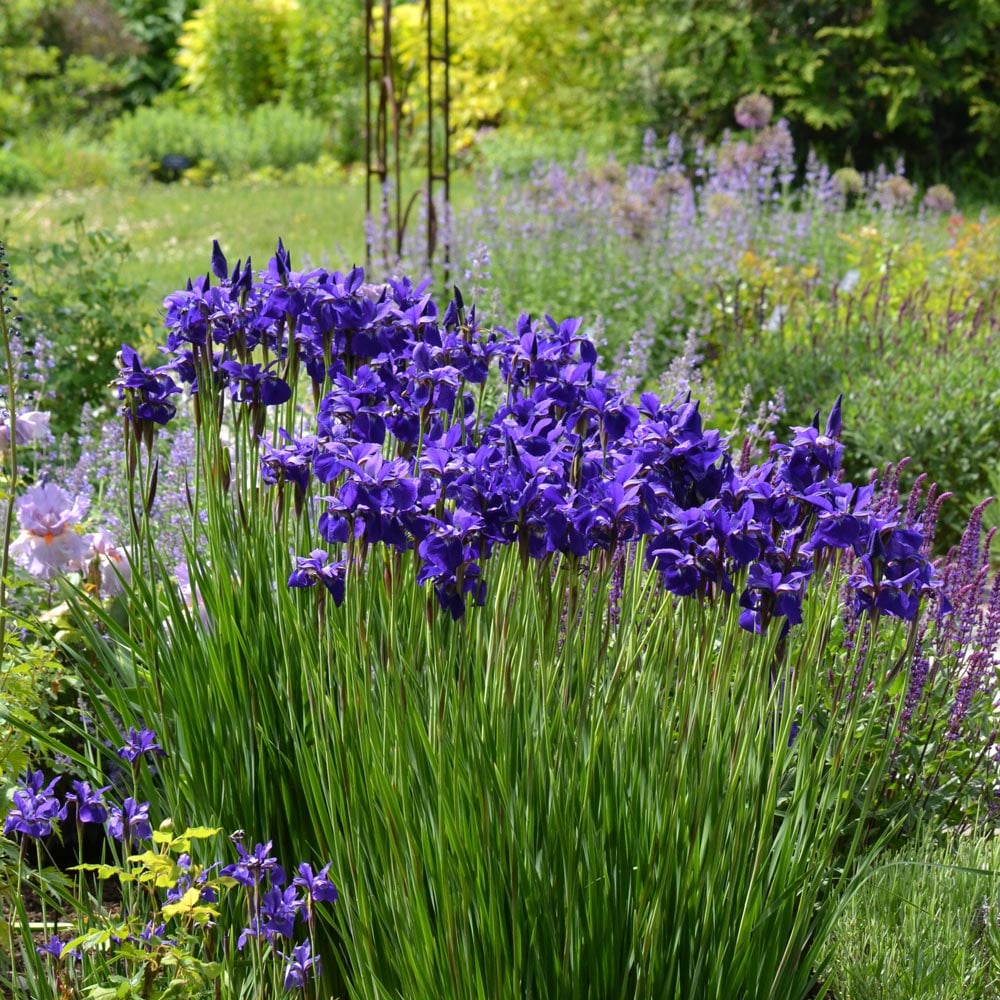
The Iris is a long-living plant that blooms in the summer season. It can grow equally well in chalky soil, clay, loam and sand as long as the soil pH is either acidic or neutral. The low-maintenance plant has beautiful deep violet-coloured blossoms, shiny green foliage and sturdy stalks. The plant is extremely toxic to animals like dogs, cats, horses and deer. The Iris plant can make your courtyard or your coastal garden look chic.
13. Zinnia
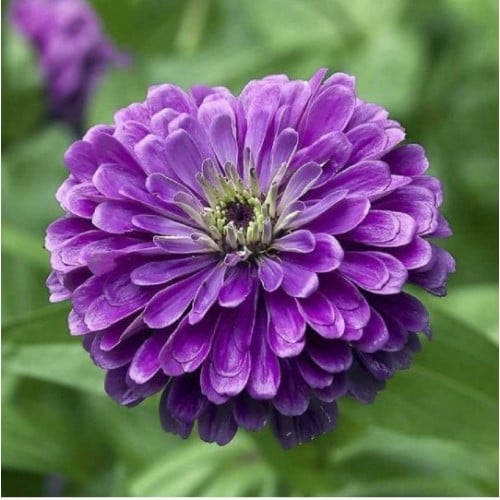
The most unique feature of Zinnia flowers is that it has multiple layers of petals. Since the plant can gain quite a height, it can give some elevation to your flower bed and some pop as it is a stunning purple flower. For healthy zinnia plants, make sure you start the process of growing them in your garden once the frost has passed. Prepare the soil with ample organic matter and mulch them once the roots gain strength by spreading a layer of straw so as to maintain the moisture level of the soil. To promote the flowering of the plant and to keep it tidy, deadhead the spent flowers. Zinnias require constant care as they get infected by pests like powdery mildew disease and Japanese beetles.
14. Liatris
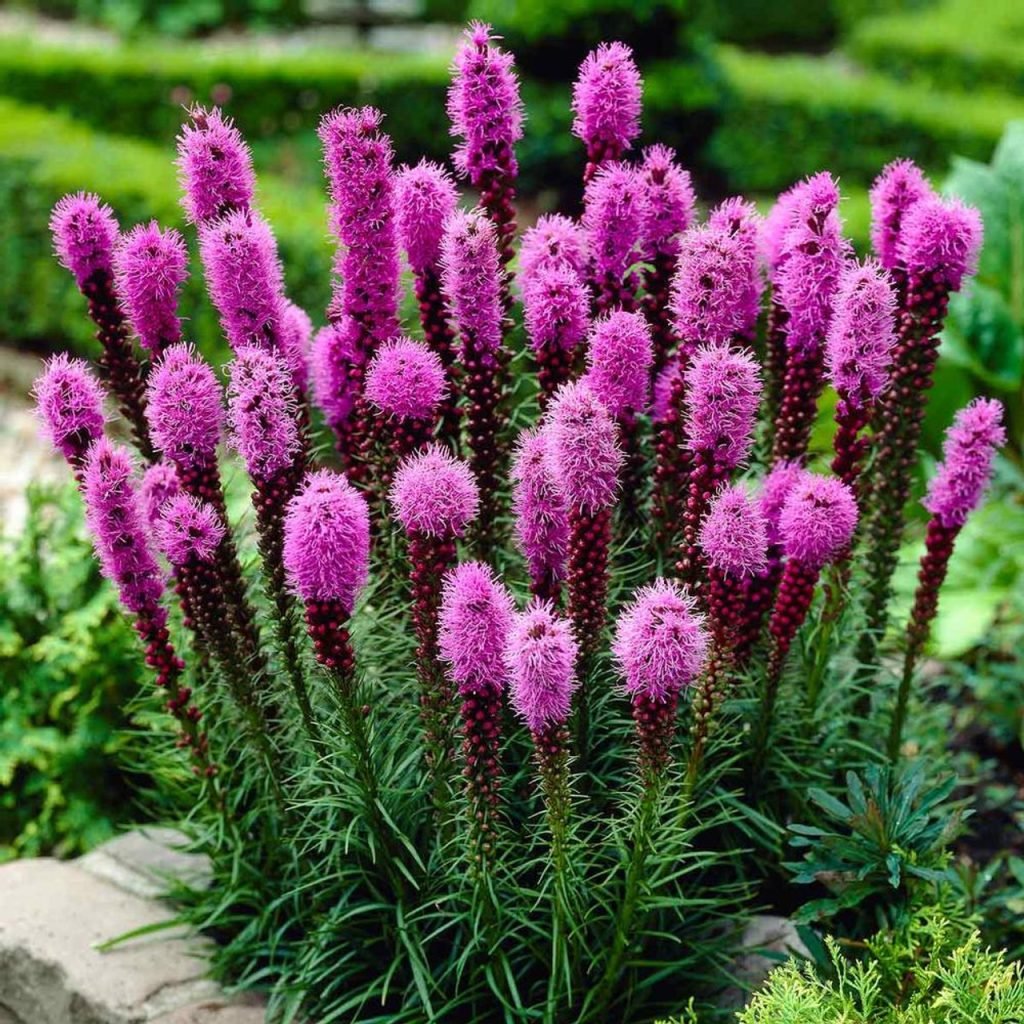
Considered to be an aphrodisiac in the floral world, the liatris flower, also called the blazing star, is a symbol of joy, happiness, and bliss. The plant multiplies gradually by producing offset corms and can last for decades once established. The height of a mature liatris is 10-30 inches tall and can spread as wide as 12 inches. The plant doesn’t demand much upkeep as it is fairly drought resistant and can even withstand temperatures as low as -30 to -40 degrees Fahrenheit. You can mix soil with some compost for the best results.
15. Opium Poppy or Breadseed Poppy
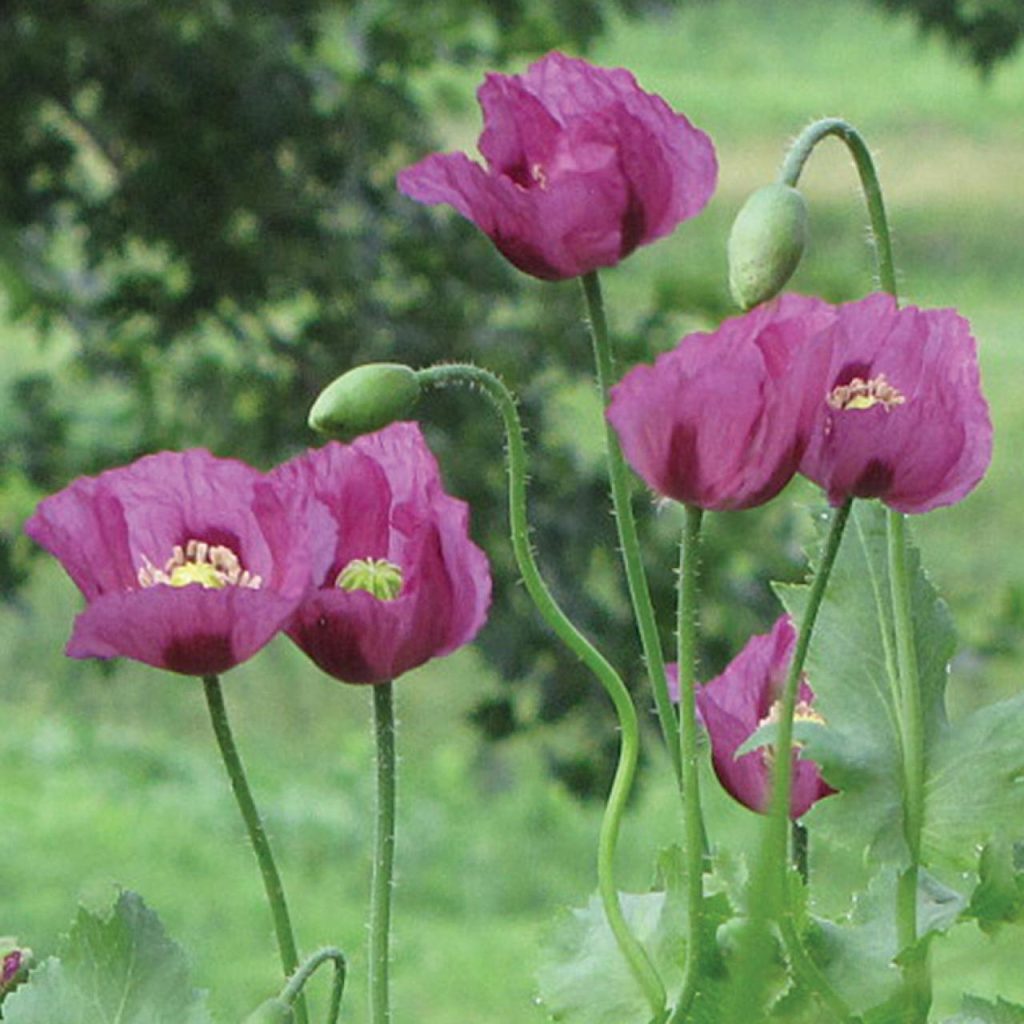
The edible flower has some stunning purple-coloured petals that are a sight to look at and a treat for the taste buds. Hungarians are fond of adding poppy seeds to their food as the seed crunch adds to the texture. Sow the seeds as soon as the soil is ready to be worked, and there is no more frost. In early spring, the soil is soft and moist, which is great for the healthy growth of roots.
16. Honeywart
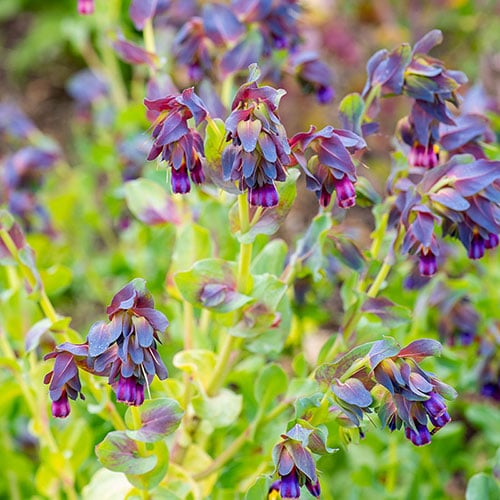
The Honeywart flower is set apart in your garden by the beautiful bell-shaped blooms that have a deep violet colour. The flower can be conveniently grown in beds, containers and pots and is also a major attraction for pollinators like hummingbirds, bees and butterflies. Grow the plant in humus-rich soil with plenty of organic matter and keep the plant appropriately watered so that the roots do not rot. The plant has thick leaves that are grey-green in colour and have a shiny as well as a waxy texture. The most popular cultivars of Honeywart are Purpurascens and Kiwi Blue.
17. Wishbone Flower
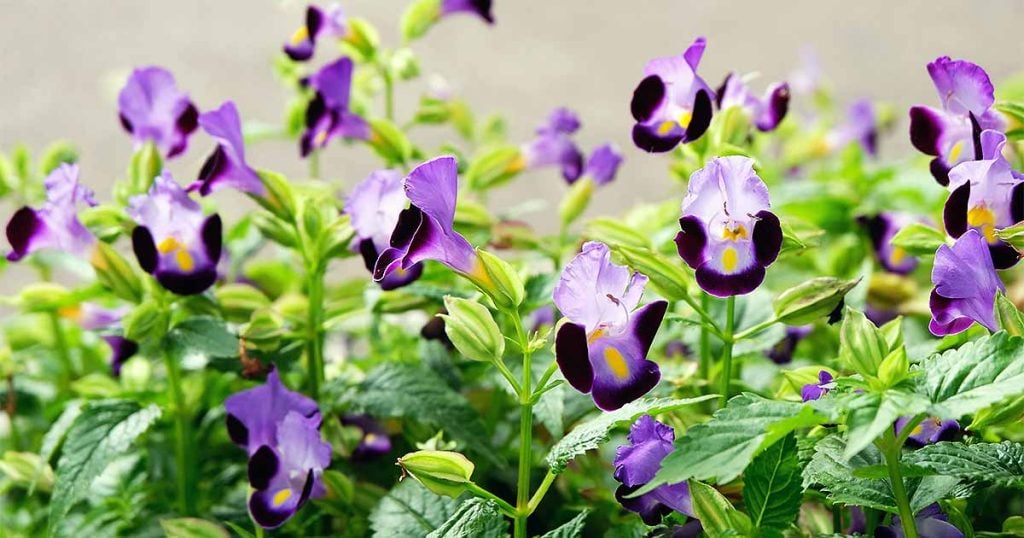
The plant is named after its unique feature, i.e. two stamens grow from opposite sides of the flowers and come together in the middle to form a structure that resembles a chicken wishbone. The flowers are quite long-lasting as they bloom quickly and profusely at the advent of spring and last till the cold weather sets in. In the past, the wishbone flower has been used for the cure of gonorrhoea and infection of the cornea. Gilded Grape, Grape-o-Licious and Midnight Blue are some of the most popular varieties of the wishbone flower.
18. Sweet William
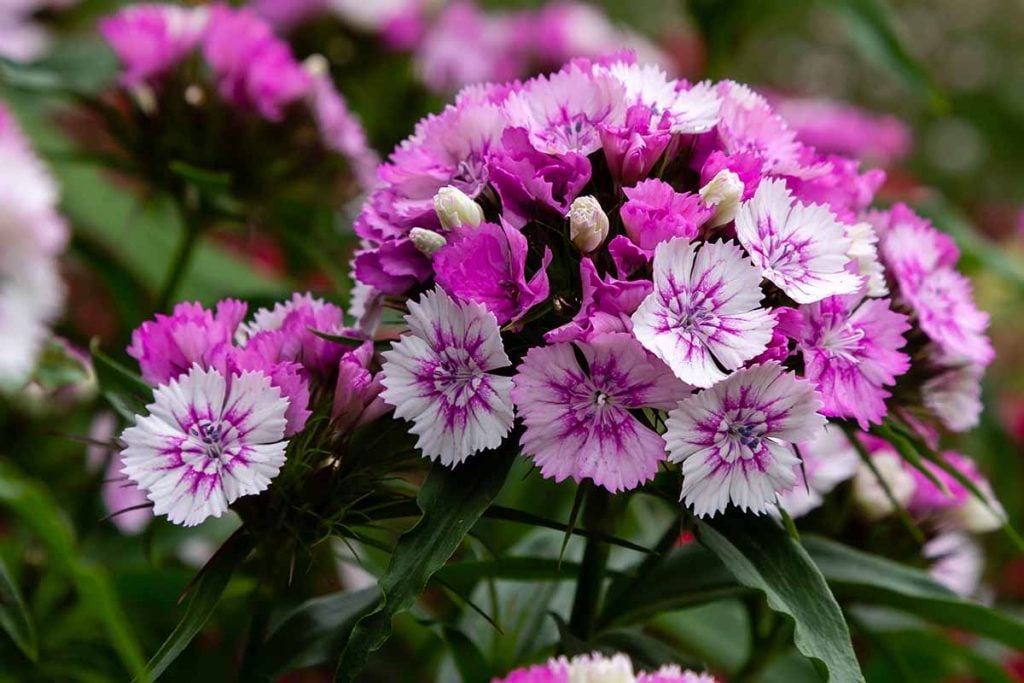
These short-lived herbaceous plants are low-growing flowering plants that can add some pop to your garden. The leaves of the plant are slightly pointed, and the average height of Sweet Williams is about 2 feet. The plant is quite diverse as it can be grown in pots, containers and flower beds. A moist, well-drained soil with full to partial sun exposure can make these flowers bloom beautifully. Exercise caution if you wish to grow Sweet Williams in your garden, as you may encounter problems like rust and crown rot, which is an attraction for snails and slugs and can also be toxic for pets.
19. Dark Throat Shooting Star
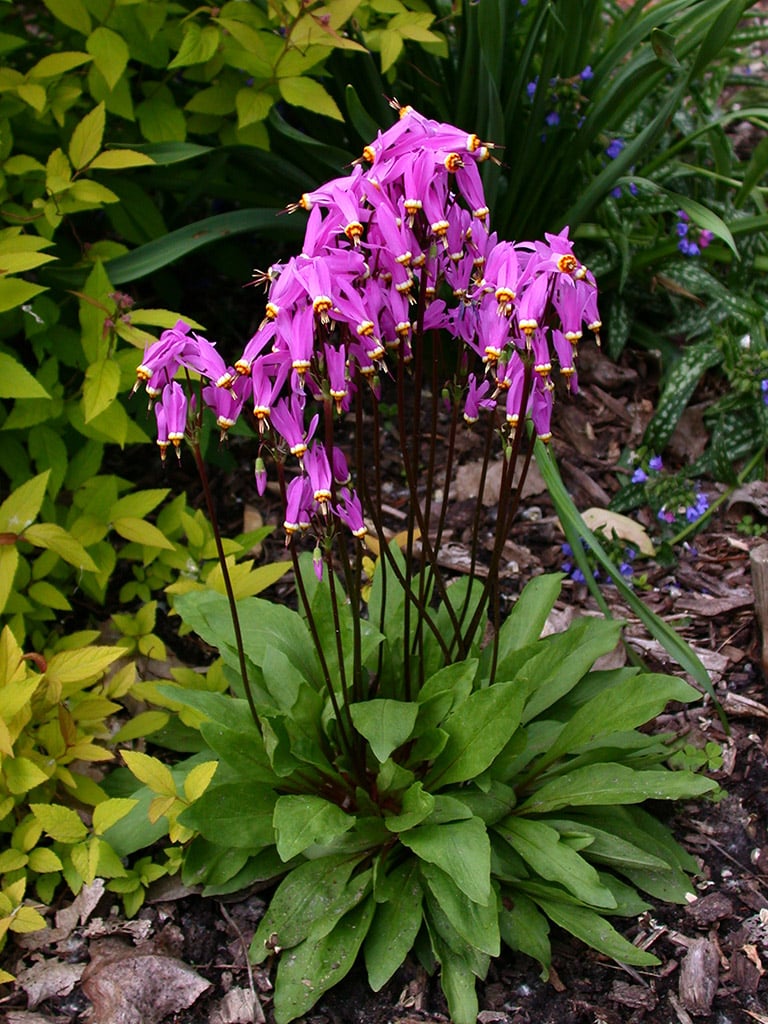
Primula pauciflora, also commonly called Dark Throat Shooting Star, is an excellent choice for beds and borders and for underplanting shrubs in cottage gardens, woodland gardens, and rock gardens. Owing to its beauty and unique features like leafless stems, the flower has been awarded the Royal Horticultural Society’s Award of Garden Merit. Although these flowers are resistant to diseases, they can be an attraction for slugs and snails.
20. Gayfeather
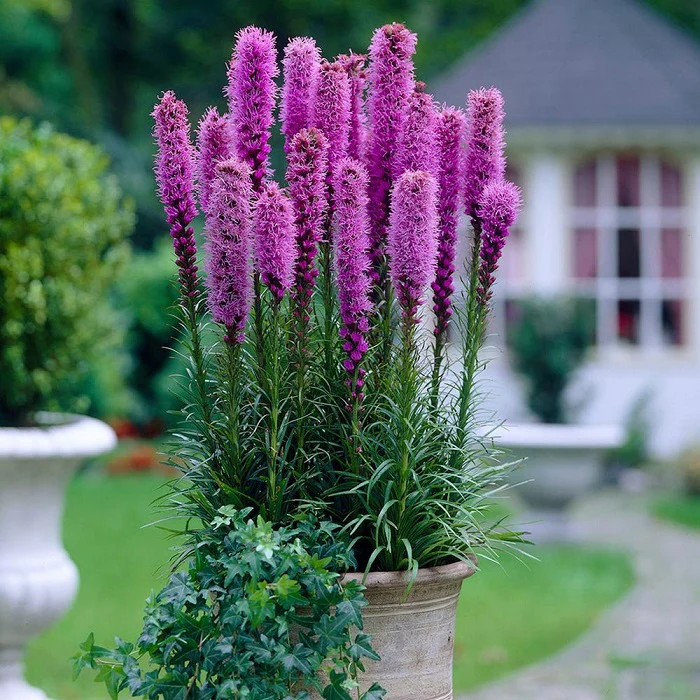
This flower gets its name from the feathery appearance it has. The stalks are leafless, and the rocket-like blooms are covered with many tiny little flowers that will set them apart from all the other flowers in your garden. To promote blooming, keep removing faded flowering stems and raise them once the foliage declines in mid-summer. When working with these flowers, do take extra care of yourself, for the sap may cause irritation and allergies if it comes in direct contact with your skin.
21. Chinese Meadow Rue
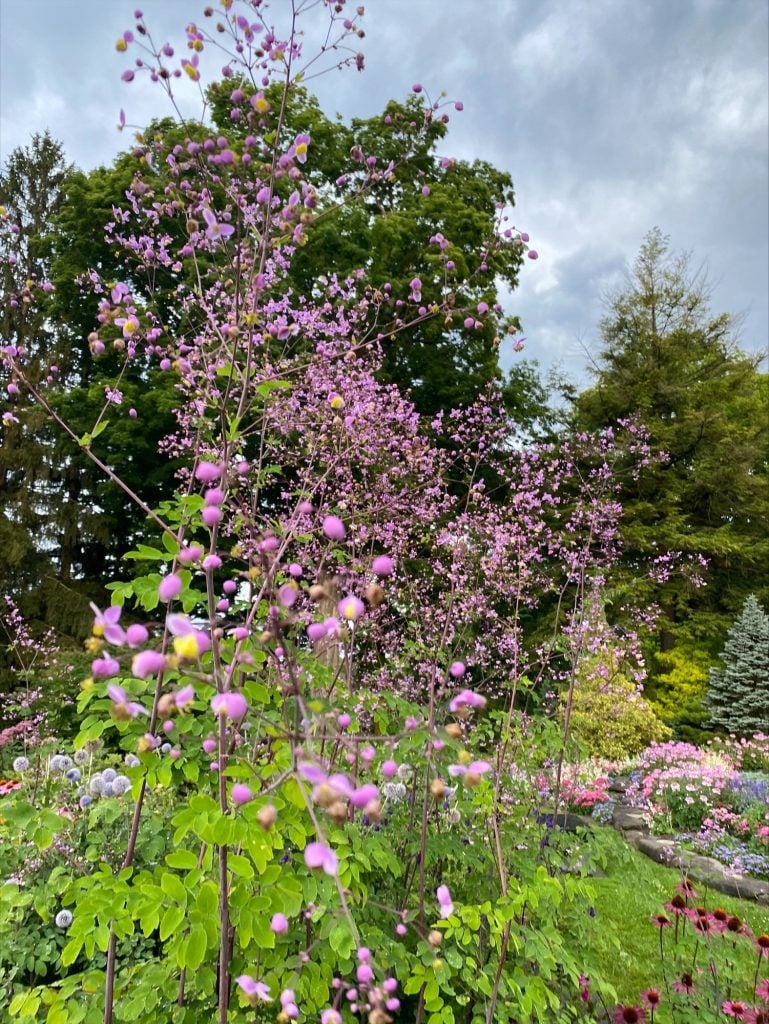
The leaves of the Chinese meadow row bear a close resemblance to the leaves of the common rue. The flowers are tall and slender, and the flowers have airy clusters of pendulous and soft creamy stamens. The delicate plant cannot withstand hot and humid weather. However, it demands six to eight hours of sunlight every day while growing. It must be grown in moist soil that is properly irrigated and can be propagated by seeds in pots in a cold frame.
22. Hydrangea
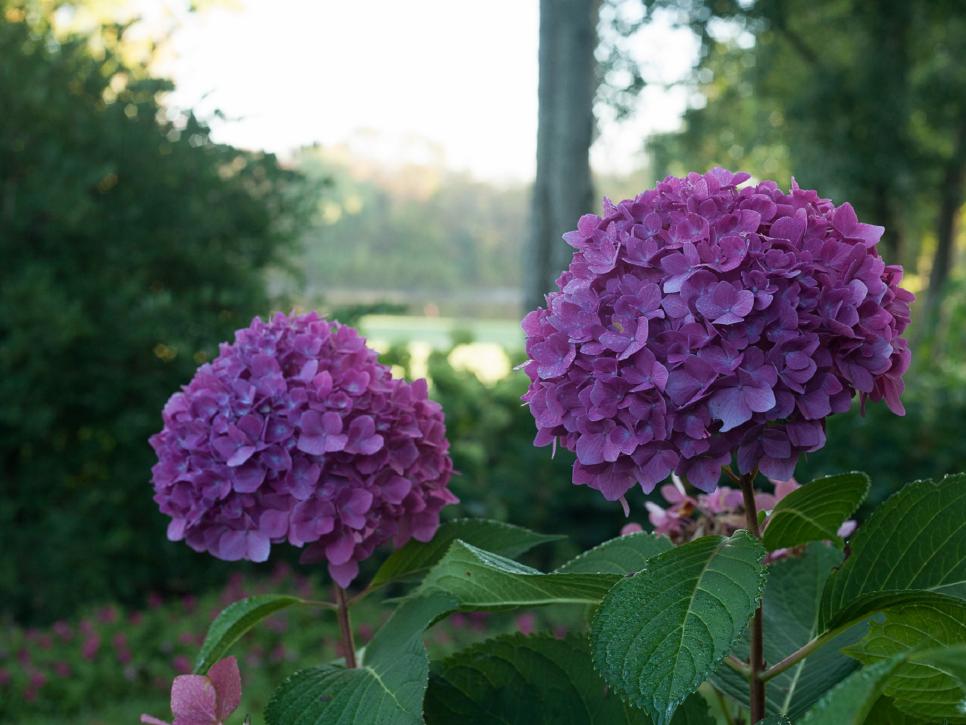
The hydrangea flowers are purely ornamental flowers that can make any garden space come alive. The plants change colour according to the acidity of the soil. So, if you wish to have blue hydrangeas in your garden, simply mix some coffee beans or citrus peel into the soil and voila!
Although the plant looks beautiful in a garden, if you wish to adorn your house from the inside, cut them and put them in water immediately. If your hydrangeas have wilted, cut them and put them in boiling water to restore hydration. Once they revive, soak these plants in water at room temperature so that they stay fresh.
23. Mexican Bush Sage
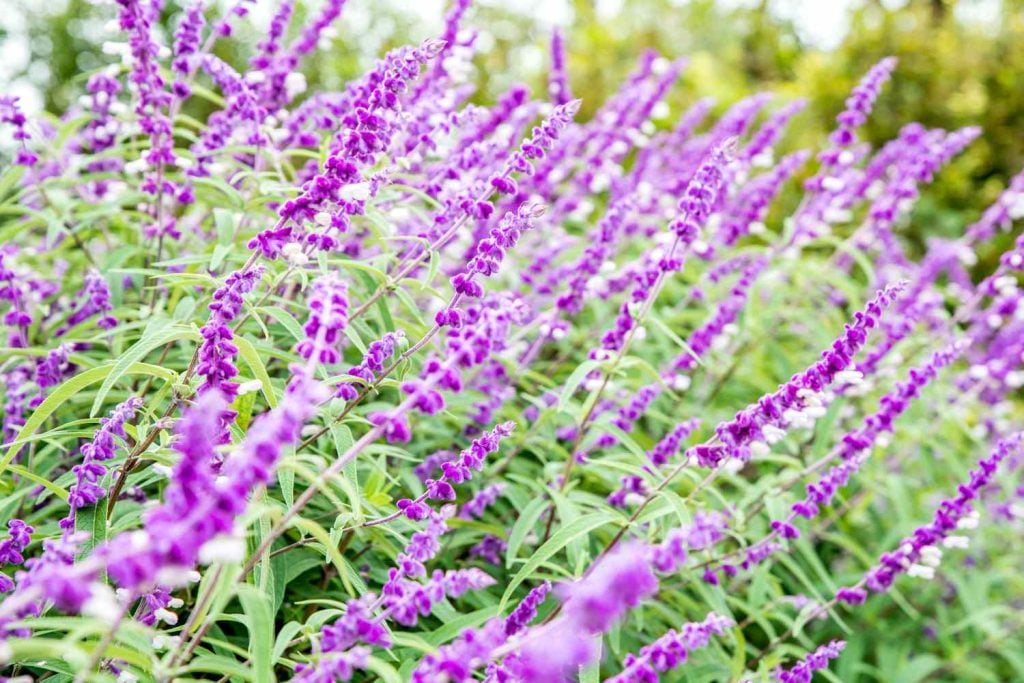
The Mexican bush sage, sometimes known as woolly sage, is a native of subtropical and tropical rainforests in Mexico. Therefore, the plants can withstand heat and are resistant to drought. The plant is not fit for human consumption and has very little therapeutic value. However, it has nectar to offer to hummingbirds, bees and other pollinators. To maintain the shape of the plant, trim the plant occasionally and dead-head once the blossoms fade. The flowers exude a beautiful fragrance and are often dried and used in potpourri.
24. Italian Asters
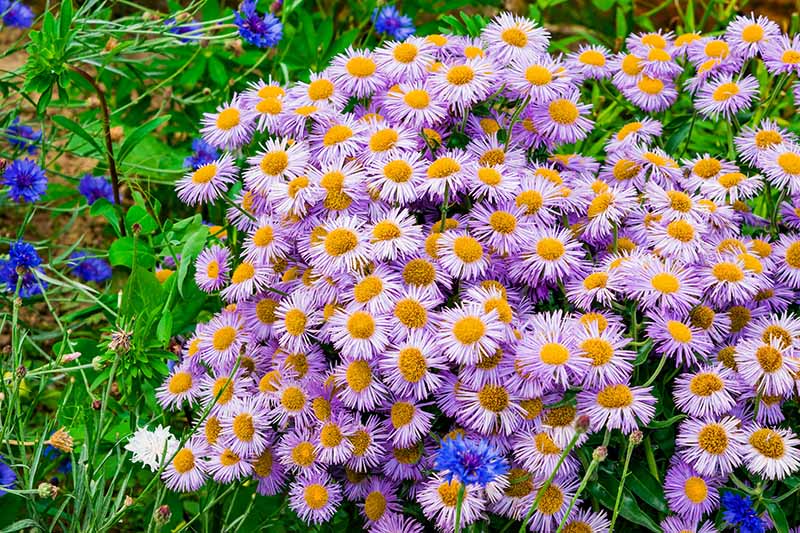
Given that the shape of the flower resembles a star, the name Italian Asters has been inspired by the Greek word ‘Star’. Your native landscape gardens can benefit from the stunning look of the purple flower and also the divine aroma. Italian Asters can serve the purpose of covering the ground as it colonises by stolon and requires constant thinning to restrict their spread. The plant favours neutral to acidic soil, and under the right conditions, the seed will germinate in a period of two weeks. The flowers are susceptible to leaf spots, rust, and even yellow disease, which can give the flowers a bleached appearance.
25. Russian Sage
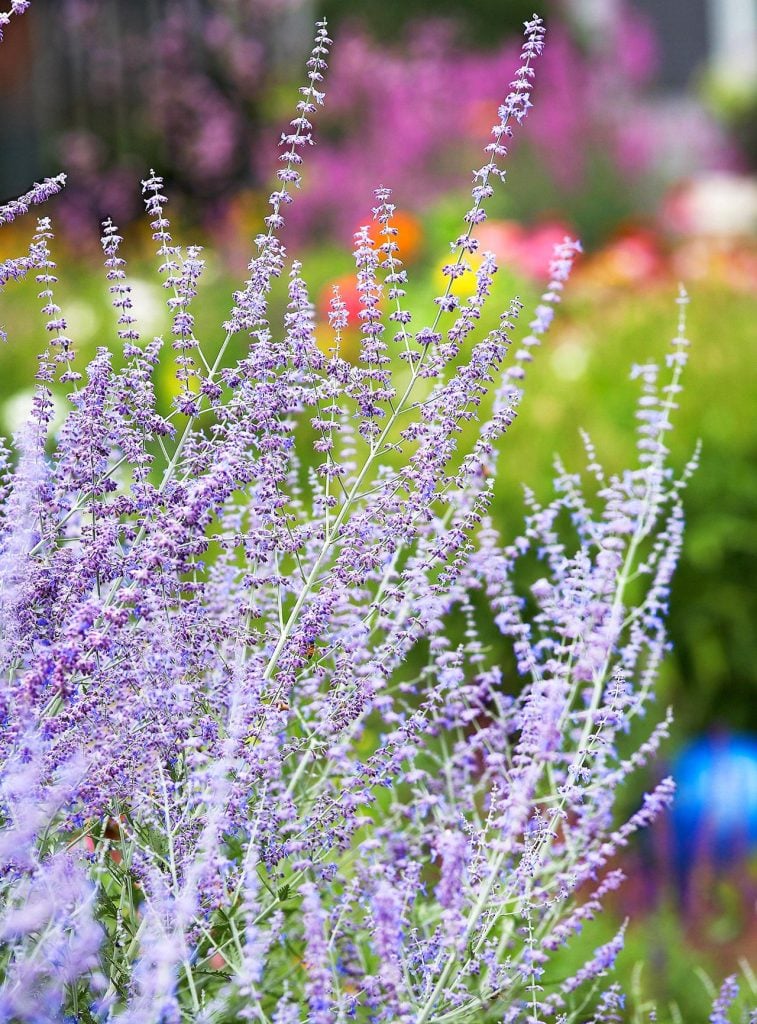
The Russian Sage is not a beautiful flower to be grown in your backyard, but it can be extremely beneficial for your health as well. Next time when you have stomachache or indigestion, boil some sage leaves in water to make a herbal tea for yourself and have it to get rid of the pain. The heat and drought-tolerant plants are very versatile as they can grow as filler in borders or as hedges and can be grown in pots as well as in the ground. The leaves and flowers of the plant exude a distinct aroma when crushed or rubbed and are commercially sold with lavender scents for a better effect.
Conclusion
Our bodies can clearly experience the physical effects of having purple colour around us. If any variety of purple flowersis grown in your garden, the effect it will have on you will be evident to you and those around you. The softer shade of purple can calm us down and induce introspection, while the darker hue is capable of exciting us. The pastel variation of purple can aid in arousing our senses and also make us conscious of the value of a harmonious balance of inner peace and self-awareness.
If your garden serves as your retreat, cultivating a simple purple flower like lavender can help you in calming your agitated and anxious mind. On the other hand, a deep violet-coloured pansy or a hydrangea can help you discover your power and make you realise that you are capable enough to handle all the adversities in life. If you have come across any such flower that has helped you in a dark phase of your life, do let us know in the comment section.

